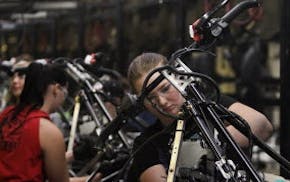Five thousand dollars. That's all it took Will Steger to build his modest home in Ely, Minn., 43 years ago. It certainly qualified as environmentally friendly: heated with a wood stove, lighted with a kerosene lamp and accompanied by an outhouse. Steger began building it when he was 19, long before his fame as a polar explorer and outspoken environmentalist.
Steger's homestead was a forerunner in a green building trend.
From 2008 to 2010, construction of green buildings increased by as much as 50 percent and represents 25 percent of all construction in 2010, according to McGraw-Hill's Construction Green Outlook. One green-building website defines an eco-friendly house as one designed, planned and constructed "where the priority and emphasis is placed on the current and future environmental impact of the building."
The house that retired WCCO-TV anchorman Don Shelby is building in Excelsior certainly meets that definition.
"It's merely walking the talk. If I'm telling people energy conservation is important, I should be doing it," Shelby said, standing outside the frame of his home. When finished, it will feature airtight walls with extra insulation, triple-pane windows, a geothermal heating system, storage tanks for grey water and rain water and solar panels to generate and provide electricity credits.
Shelby's builder, Landschute of Excelsior, will put up a house that is almost twice as energy efficient as the typical code standard for a green home.
Shelby said he will spend close to $1 million to bring this relatively modest house to the environmental gold standard. But homeowners don't have to start from scratch to effect energy efficiencies and savings. Joe Paetzel, from Landschute, suggests these steps:
• Add more insulation in attics and between walls.
• Supplement the home's electrical requirements with photo voltaic (solar) panels.
• Replace regular light bulbs with LED bulbs.
And, when remodeling, consider recycled materials. Natural Built Homes on Minnehaha Avenue in Minneapolis sells these materials to as many as 40 contractors in the Twin Cities. They range from recycled cardboard countertops, to biodegradable linoleum to denim insulation, which doesn't release toxins that are inside some insulation. "It is also more flame retardant and mildew resistant," said Greg Clark, assistant manager of Natural Built Homes.
The heat inside the house can also be used more efficiently by improving the duct work, according to Janne Flisrand, program coordinator of Minnesota Green Communities. She recommended that people use a sealant called duct mastic, a liquid glue that she says works better and more efficiently than duct tape.
From the 1950s on, the amount of carbon dioxide released into the air has increased 25 percent since large-scale industrialization began, according to an analysis from Oak Ridge National Laboratory in Tennessee. And statistics from the U.S. Department of Energy suggest that the global emission of carbon dioxide will jump more than 39 percent by 2030 unless new policies and pacts are enacted.
Since retiring from WCCO-TV last fall, Shelby has become an outspoken advocate of doing more to reduce the energy waste that feeds climate change. He figures his house in Excelsior will put his money where his mouth is. "It doesn't matter who's right, it matters what's right," he said.

Why you should donate clothing: It (probably) won't end up at the dump
4 are now charged in inside job armed robbery of Hopkins grocery store that netted $45K

Minnesota added thousands of jobs in March but worker shortage still an issue
Private prison van driver, accused of raping St. Paul woman he was transporting, gets 30 years for similar attacks

